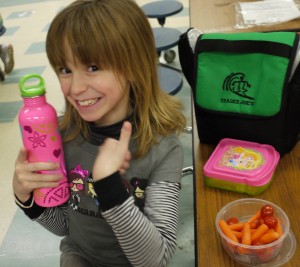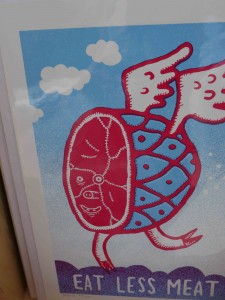Fostering environmental stewardship begins with you.
Thank you for taking the first step: researching how to get involved! Developing sound green habits at home will nurture appreciation for nature, enhance critical thinking and help your child understand the need for biodiversity and conservation. Motivated kids are more likely to become actively engaged citizens and recognize they make a difference! The good news is there are many things we can incorporate into our daily lives with little effort.
Step 1
Consume Less Stuff
Our hectic lives are filled with priorities. Understandably, your family, job and health take precedence. Convenience, however, is not sustainable. Incorporating conservation into your lifestyle surprisingly can save you time, money and enhance your health. Check out how you can become part of the solution HERE and don’t sweat the small stuff.
Step 2
Close the Loop
Closing the Loop means making new products out of recycled material instead of extracting resources from nature. It’s vital we protect nature and its resources, and significantly reduce pollution. Collectively, we can make a big difference. Start at the store by purchasing everyday items like trash bags, toilet paper, and computer paper that contains “recycled content”, sometimes referred to as “post-consumer content.” Also, try to purchase products with either no packaging or recyclable packaging.
Step 3
Be Healthy. Eat Fresh.
Have you ever read the ingredients on a bag of Doritos?
The chemicals in our processed foods are rather frightening. Step four is to focus on what we feed our families. Remember the fewer the ingredients the better it is for you. Fresh fruit and vegetables are the best choice necessary for proper growth and development. Don’t be fooled by “veggie sticks” or “fruit strips”. There is no nutritional value to these foods. Read labels carefully. Avoid High Fructose Corn Syrup, Partially Hydrogenated Fat, Artificial Colors, Flavors and other Artificial Food Additives, Enriched Flour, Processed Vegetable Oils such as corn, soy, canola, safflower, sunflower, and cottonseed oils. Go to Nourish MD to find out why.
If your child is not a fan of vegetables, you have two options: try it or hide it. Pediatricians say you have to try something 25 times before establishing a dislike for a particular food. Encourage your child to try new veggies every day. If they’re hungry before dinner, I let kids snack on veggies only. Otherwise, blend vegetables into your spaghetti sauce and soups. Add spinach to smoothies. They won’t even know it’s there! ☺
Step 4
Be Informed
Learn what you can do to make the greatest impact with the least amount of effort!
Take the Ecological Footprint Quiz HERE. This will give you insight on how your family uses resources as well as vital tips on how to reduce your consumption.
Check out complete list of Green Tips here!
Favorite Clips & Movies
1. “Story of Stuff” www.storyofstuff.com-Annie Leonard
11.“Food Inc.” -DVD
12.“Gasland” – DVD
13.“The Cove” – DVD
14.“Waste Land” -Renowned artist Vik Muniz travels to Rio de Janeiro to collaborate with garbage pickers. Terrific DVD!
15.“Dive” – DVD
16.“Zero Impact Man” – DVD
17.“Planet Earth” – TV Series
Books
- Use Less Stuff – Bob Lilienfeld
- Omnivores Dilemma
- The Lazy Environmentalist on a Budget – Josh Dorfman
- The Green Book – Rogers & Kostigen
- Cradle to Cradle – William McDonough & Michael Braungart
There are tons of children’s books to read with your kids to help them understand the importance of conservation. Check out your local library or Barnes and Noble. We love:
- One Child One Planet – Bridget McGovern Llewellyn
- A Log’s Life – Wendy Pfeffer
- The Magic School Bus series – Scholastic
- Be a Friend to Trees – Patricia Lauber
Step 4
Get outdoors and play
This may seem obvious, but the best way to promote appreciation for nature is to hang outside.
Five ubiquitous foods to avoid
Take a stand for your child’s health by steering clear of these dubious ingredients.
By GreatSchools Staff
Microwave popcorn
The culprit? Artificial butter flavoring.
What could be wrong with popcorn? Well, as reported by a 2006 Health Hazard Evaluation Report by the National Institute for Occupational Safety and Health (NIOSH) and a follow-up investigation in 2010, researchers have linked a chemical used in artificial butter favoring — diacetyl — to a life-threatening lung disease called bronchiolitis obliterans syndrome (BOS), also known as “popcorn workers lung.” The condition has primarily affected workers at food favoring plants, and recently, one worker suffering from BOS was awarded over $30 million for the damage done to his lungs as an employee. In 2007, the major popcorn makers removed diacetyl from their products, but as recently as last year, NIOSH found the replacements, which include diacetyl trimer and butter starter distillate, are just as dangerous. NIOSH, in collaboration with the Center for Disease Control, is still in the process of creating recommended exposure limits for diacetyl and its related substitutes.
What’s more, the Environmental Protection Agency has found another thing to fear in microwave popcorn: perfuorooctanoic acid (PFOA). Added to the bag’s lining, PFOA has been shown to build up in the body over time, and the EPA and National Institute of Environmental Health Sciences (NIEHS) are still evaluating the human risk factor of the chemical. Manufacturers have agreed to phase out PFOA by 2015, but that is a long way off.
Photo credit: Jeffry B.
Hamburger
The culprit? Ammonia-treated “pink slime.”
In a 2009 article, the New York Times delved into reports that the company that contributes to most of the fast food chains in the country as well as the federal school lunch program — Beef Products Inc. — had inefficient methods of treating their beef to rid it of E.coli and salmonella. BPI had developed a revolutionary method of treating beef trimmings with ammonia to render them safe for human consumption, but after complaints of the beef smelling strongly of ammonia, the company decreased the levels of ammonia in the treating process, thus making it less effective. The United States Department of Agriculture accepted studies by the company that certainly “beefed up” results and excused BPI meat from recalls, even when it was found in contaminated meat.
In response, BPI has launched a massive testing for poisonous strains of E.coli (only one strand is required by law; BPI is now testing for six others) in July of 2011. As test results are still not in and pathogens in meat keep evolving and, carnivores might do well to proceed with caution when chowing down at a barbeque or fast food chain. To help protect the public, the USDA published a 2010 report with 14 recommendations for how the industry can make beef safer, many of which have yet to be implemented.
High-fructose corn syrup
The culprit? High-fructose corn syrup, of course.
It sounds innocuous enough or at least better than sugar, right? But its sheer ubiquity may be the problem.
According to a USDA study put out in 2011, from 1970 to 1985, per capita consumption of high-fructose corn syrup rose in direct proportion to the decline of refined-sugar intake. Since 2003, sugar has again been on an incline while high-fructose corn syrup has been slowly decreasing, but experts still see a link between HFCS intake and the current obesity epidemic. A 2010 Princeton University study showed that HFCS intake causes significantly more weight gain than table sugar and carries more risk factors for high-blood pressure, coronary artery disease, cancer, and diabetes.
Cheaper than sugar, high-fructose corn syrup has seemingly made its way into almost everything kids love to eat. In response to consumer backlash, some companies are changing their recipes, but this omnipresent sweetener finds its way into common kid-friendly foods like ketchup and yogurt. (Not surprisingly, the most likely place you’ll still find HFCS? Soft drinks.) The Corn Refiners’ Association is currently lobbying the U.S. Food and Drug Administration to change HFCS’s name to “corn sugar,” as more people refuse to buy products containing HFCS.
Some scientists, physicians, and nutritionists wonder whether high-fructose corn syrup is really much worse for you than other sweeteners, but the reality is that studies continue to link it to health problems. The FDA has recommended that if any type of sugar — including HFCS — is the first ingredient on the label, it’s best to leave it on the shelf.
Canned tuna
The culprit? Mercury.
Canned tuna had its 15 seconds in the nineties, when worries about the industry’s deleterious effects on dolphins led to the creation of “dolphin-safe” labels. But there’s still a big problem with this popular kids’ sandwich filling: mercury.
Since the 1970s, studies have consistently found high levels of mercury in the fish. A2005 report by the Chicago Tribune, “The Mercury Menace,” exposed the Food and Dr’s long-standing refusal to acknowledge the problem, and a New York Times report from 2008 revealed even higher levels in fresh tuna used in sushi restaurants.
As recently as January of 2011, Consumer Reports found that mercury in canned tuna was still a concern. After testing samples bought in the New York metropolitan area and online, the report found that children and women of childbearing age consume more mercury than the Environmental Protection Agency advises by eating just one serving of canned white tuna or two servings of light tuna once a week.
The tuna tests found mercury ranging from 0.018 to 0.774 parts per million; the FDA will only pull products containing 1 or more parts per million (to date, the FDA has never had to enforce this). Despite being under the legal limit, the mercury levels are dangerous and the FDA still doesn’t acknowledge the potential health hazards.
Photo credit: JustinWoolford
Fruit snacks
The culprits? Sugar and trans fat.
Fruit snacks and roll-ups can be tempting school snacks. With vitamin C, fruity favors, and hardly any calories, they’re an appealing choice for many parents whose kids clamor for sweet treats. But taking a glance at even the simplest fruit snacks reveals that the closest thing to an actual fruit is a fruit concentrate, i.e., basically sugar. Add to that some corn syrup, hydrogenated oil (trans fat), and some food coloring and you’ve got the quintessential fruit-free fruit snack.
In addition to not having any nutritional value, dentists are now reminding parents that sugary treats like fruit snacks can mix with bacteria in the sticky plaque that forms on children’s teeth, leading to tooth decay and enamel wearing away.




 Name: Gina Adams-Levy
Name: Gina Adams-Levy